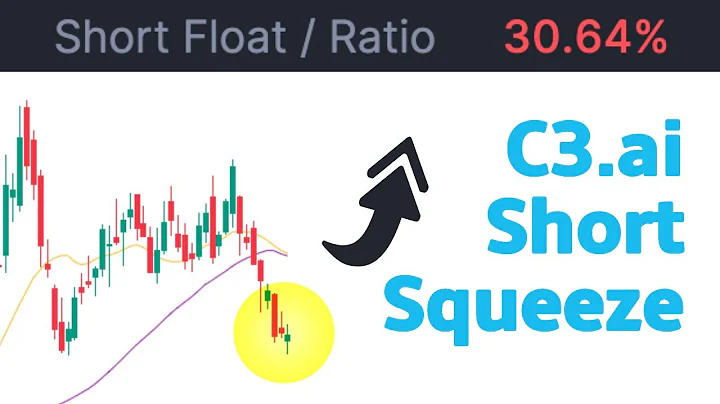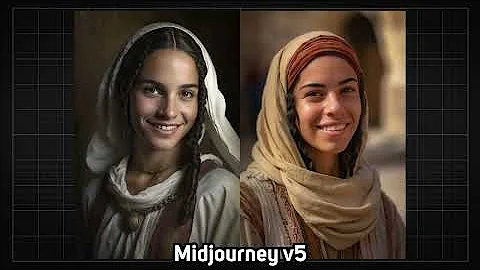The Future of AI in Art: Enhancing Creativity, Not Replacing Artists
Table of Contents
- Introduction
- The Legacy of Prompting in AI Art
- The Evolution of User Interfaces in Computing
- The Problem with AI Prompters
- The Rise of Generative AI Tools
- Adobe's Approach: Integrating AI as a Tool
- Kaa and the Importance of Drawing in Art
- The Shift towards Visual and User-Friendly Interfaces
- The Optimistic Outlook for Artists and AI
- Embracing AI as an Aid, Not a Replacement
- The Future of Art and Technology
- The Potential Benefits for Artists
- Challenging the Traditional Use of Sketchbooks
🎨 The Future of AI in Art: Embracing Creativity and Technology
Artists have always relied on their creativity and unique perspectives to create compelling works. Throughout history, art has evolved alongside technological advancements, offering new tools and techniques for artists to explore. In the digital age, artificial intelligence (AI) has emerged as a transformative force, promising to revolutionize the art industry. However, the role of AI in art has been a subject of debate, with questions arising about the future of prompters and the impact on traditional artistic processes.
The Legacy of Prompting in AI Art
Prompting, the act of giving specific instructions to AI models to generate desired outputs, has been a prevalent approach in the realm of AI art. Artists and AI users would type orders into a computer, hoping to achieve the desired artistic outcome. However, this process bears striking similarities to the early days of computing, where users interacted with computers through text-based interfaces. As technology progressed, graphical user interfaces (GUI) became the norm, enabling users to interact with computers visually and intuitively.
The Evolution of User Interfaces in Computing
Operating systems like Windows and Mac OS introduced graphical user interfaces that revolutionized computer usage. Instead of relying on text-based commands, users could now navigate through icons and folders, simplifying the interaction process. This shift away from writing instructions was driven by the need for more intuitive design and user-friendly experiences. The art industry, too, has embraced visual interfaces as a means of creating art, moving away from the clunky and unintuitive process of writing prompts.
The Problem with AI Prompters
Prompters face inherent challenges that limit their potential in the art industry. Many AI users have antagonized prominent artists who have spoken against AI art, training models using their art without permission or solely to provoke a reaction. Moreover, most AI users lack fundamental art skills, which initially attracted them to AI as a means of circumventing the need for artistic knowledge. Consequently, AI-generated artwork may appear well-rendered but lacks true artistic merit. As AI users wait for the technology to improve, AI companies cannot solely rely on this user base to demonstrate the value of their software.
The Rise of Generative AI Tools
Amidst the challenges posed by prompters, AI companies have recognized the need to shift towards generative AI Tools that assist artists rather than replace them. Adobe, a leading software company, has integrated AI as another tool within their software suite. While some programming remains necessary, the majority of the interface is visual, leveraging buttons, sliders, and other tools to achieve desired effects. Adobe even offers a tool, Firefly, that simplifies the AI art creation process further. This shift from prompting to visual interfaces signifies a departure from clunky, text-heavy processes, ultimately benefiting artists.
Kaa and the Importance of Drawing in Art
Other companies, such as Kaa, emphasize the importance of drawing and artistry in creating AI-generated images. While Kaa still requires users to draw, the software assists in enhancing and refining their artwork. This approach acknowledges that prompting is taking a back seat to the actual act of drawing, highlighting the collaborative relationship between artists and AI. As these tools continue to evolve, the focus will increasingly be on empowering artists rather than replacing their skills.
The Shift towards Visual and User-Friendly Interfaces
The future of AI in art lies in the development and implementation of more accessible and user-friendly interfaces. The aim is to create tools that seamlessly integrate AI with existing artistic workflows, enriching the creative process. Drawing upon the legacy of AI prompters, companies are keen to offer artists a range of AI-assisted options, providing assistance with complex or time-consuming tasks. By democratizing access to AI-assisted tools, artists can produce quality artwork in less time, allowing them to focus on their craft and produce more prolifically.
The Optimistic Outlook for Artists and AI
Contrary to concerns about AI replacing artists, the future holds great promise for both art and technology. With the right approach, AI can serve as a catalyst for creativity, boosting artistic output and expanding artistic horizons. Artists will no longer have to wait for years to complete projects, as AI assists in various aspects of the artistic process. By utilizing AI as a tool, artists can maintain artistic control and achieve their vision efficiently.
Embracing AI as an Aid, Not a Replacement
The Fusion of art and technology offers immense potential, enabling artists to push the boundaries of their creativity. AI can assist in areas where artists struggle or wish to expedite processes, while artists retain their unique perspective and skills. Instead of fearing the integration of AI into artistic practices, artists should embrace the possibilities it presents. By opening up to new techniques and tools, artists can unlock previously unattainable artistic expressions and make their creative visions a reality.
The Future of Art and Technology
As the art industry continues to evolve, the integration of AI will reshape traditional practices. Artists and AI will collaborate, leveraging the strengths of each to push the boundaries of creativity. The future holds AI tools that embrace artists' needs, offering intuitive interfaces, personalized training, and assistance with complex tasks. The result will be a symbiotic relationship between artists and AI, where technology serves as a powerful ally in the pursuit of artistic excellence.
The Potential Benefits for Artists
The adoption of AI in the art world offers numerous benefits for artists. With AI's assistance, artists can produce higher-quality work in less time, allowing for greater productivity and creative output. AI tools can assist in maintaining consistency throughout a series of artworks or help with iterative processes, enabling artists to explore numerous variations quickly. Additionally, AI can aid in skill development, providing suggestions and guidance to enhance artistic techniques. The future of art and technology holds the promise of an enriched creative process for artists.
Challenging the Traditional Use of Sketchbooks
One area of contention within the art world is the traditional use of sketchbooks. While sketching is a valuable practice for many artists, the conventional concept of sketchbooks has limitations. Some artists argue that sketchbooks can hinder creativity by confining ideas to physical pages. The integration of AI can challenge this Notion, acting as an extension of an artist's thoughts and providing a platform for exploring ideas without restrictive boundaries. Embracing AI tools for sketching can enable artists to break free from traditional constraints and unlock new possibilities for artistic expression.
FAQ
Q: Does the rise of AI in art threaten the role of human artists?
A: No, AI serves as a tool to aid artists rather than replace them. It is a means of expanding their creative potential and streamlining certain aspects of the artistic process.
Q: Will AI-generated art lack true artistic merit?
A: While AI-generated artwork may appear well-rendered, true artistic merit lies in the artist's vision and skills. AI-assisted tools can enhance artists' abilities and enable them to bring their artistic visions to life more efficiently.
Q: What are the potential benefits of AI in art?
A: AI offers artists the opportunity to produce higher-quality artwork in less time, enhance their skills through guidance and suggestions, and explore new creative avenues.
Q: How does AI challenge traditional artistic practices?
A: AI challenges traditional practices by introducing more accessible and user-friendly interfaces, expanding the possibilities of sketching, and providing tools that help artists overcome artistic hurdles.
Q: What role will artists play in the future of AI in art?
A: Artists will continue to be at the forefront of the creative process, utilizing AI as a powerful tool to enhance their artistic abilities and realize their creative visions more efficiently.



























